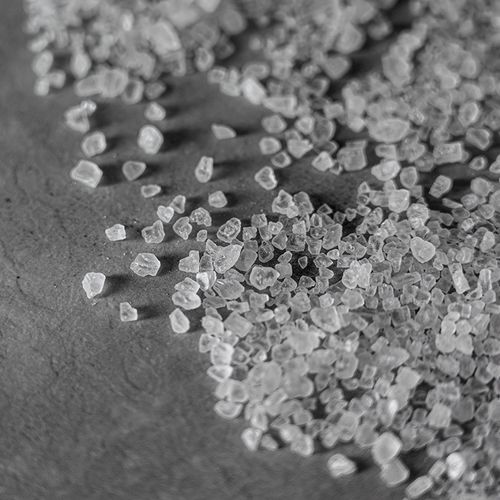Can you remember the last time you filled the saltshaker on your kitchen table? After all, you're probably well aware that excess salt contributes to high blood pressure, cardiovascular disease and stroke risk (not to mention bloating and under-eye bags). And it's linked to kidney stones, asthma, osteoporosis and gastric cancer, too.
Top Doctor's Natural Cure…
L-arginine for High Blood Pressure L-arginine is an amino acid found in meats, grains, fish and other foods. When you take higher, supplemental doses, it increases blood levels of nitric oxide, which dilates arteries and reduces blood pressure. Studies have shown that patients who take L-arginine can reduce their blood pressure by 20 points or more. Also, L-arginine appears to reduce atherosclerosis, buildups in the arteries that lead to most heart attacks.
How to use it: Take 1,000 milligrams (mg) twice a day. Use a time-release form-it will stay active in the body throughout the day.
Caution: L-arginine can interact with some medications, including high blood pressure medications and nitroglycerin.
But simply ignoring the saltshaker won't keep you safe, because only 11% of the sodium consumed by the average American comes from adding salt while cooking or eating a meal. And just 12% comes from naturally salty foods. This means that more than three-fourths of the sodium in the typical US diet comes from packaged foods and restaurant fare.
Yet some of the worst sodium-stuffed offenders are foods that people generally do not think of as salty. That's why the American Heart Association (AHA) recently released its "Salty Six" list of common foods that are surprisingly high in sodium.
Which of the six are sneaking salt into your system?
The Dirty Half-Dozen
The AHA recommends that all Americans keep their salt intake to less than 1,500 mg per day-less than half of the current average intake of about 3,400 mg per day. To achieve that, watch out for…
- Breads. Even though bread doesn't usually taste salty, a single slice has as much as 230 mg of sodium. If you have two slices of toast at breakfast, a sandwich at lunch and a roll or two with dinner, you're darn close to your whole day's allotment of sodium before you've factored in any other foods. And if you spread that bread with regular butter (butter not labeled "unsalted"), which has about 100 mg of sodium per tablespoon, you're over the limit.
- Poultry. The amount of sodium varies depending on how poultry is prepared—but did you know that even raw chicken or turkey may contain salt? Often salt is added during packaging to help keep poultry fresh...poultry may be brined to make it kosher...or a salty broth may be added to raw poultry to ensure that it will be moist after cooking. This process can add 100 mg of sodium or more to each serving of poultry-including the ground poultry that's so popular these days. Of course, poultry that's breaded and fried is typically far worse. For instance, a 35-ounce serving of chicken nuggets usually contains about 600 mg of sodium.
- Cold cuts. You know that bologna, salami, ham and other such meats are high in sodium, but you may not realize just how salty they really are.
Reality check: A modest four-ounce serving of deli meat can use up your entire day's allotment of sodium in one fell swoop. Deli turkey isn't necessarily much better-four ounces of smoked turkey breast typically has nearly 1,100 mg of sodium.
- Soup. What seems like a healthy choice—a nice bowl of vegetable or chicken noodle soup—can sabotage you because prepared soups, broths and bullions are loaded with salt. Just one cup of canned soup contains as much as 940 mg of sodium...so if you consume the whole can (as many of us do), you're way above the limit for the day.
- Pizza. This fast food has salt in the cheese, in the crust and in the sauce. Just one four-ounce slice of cheese pizza contains up to 760 mg of sodium-and that's assuming you don't add pepperoni or another salty topping.
- Sandwiches. Since bread and cold cuts are loaded with salt, putting them together in a sandwich is a sure way to exceed your salt quota, particularly if you include other sodium-packed extras such as cheese (176 mg per ounce for cheddar) and/or mustard (171 mg per tablespoon).
Pass The Salt…Right On By
Fortunately, there's a lot you can do to cut back on salt…
- Instead of having a whole sandwich at lunch, have half a sandwich plus a small side salad.
- When you order a pizza, ask for a thin crust and half the usual amount of cheese.
- Make your own soup so you control how much salt is added.
- Opt for low-sodium versions of your favorite foods, particularly breads, meats and soups. And be sure to compare the serving size listed on the label with how much you actually eat—for instance, do the math to see how much sodium that full bowl of soup actually contains.
- When buying raw fresh or frozen poultry, choose packages labeled "no added salt or "no added broth."
- On food labels and restaurant menus, look for foods with the AHA Heart-Check mark-these meet AHA nutritional standards, including for sodium content.
